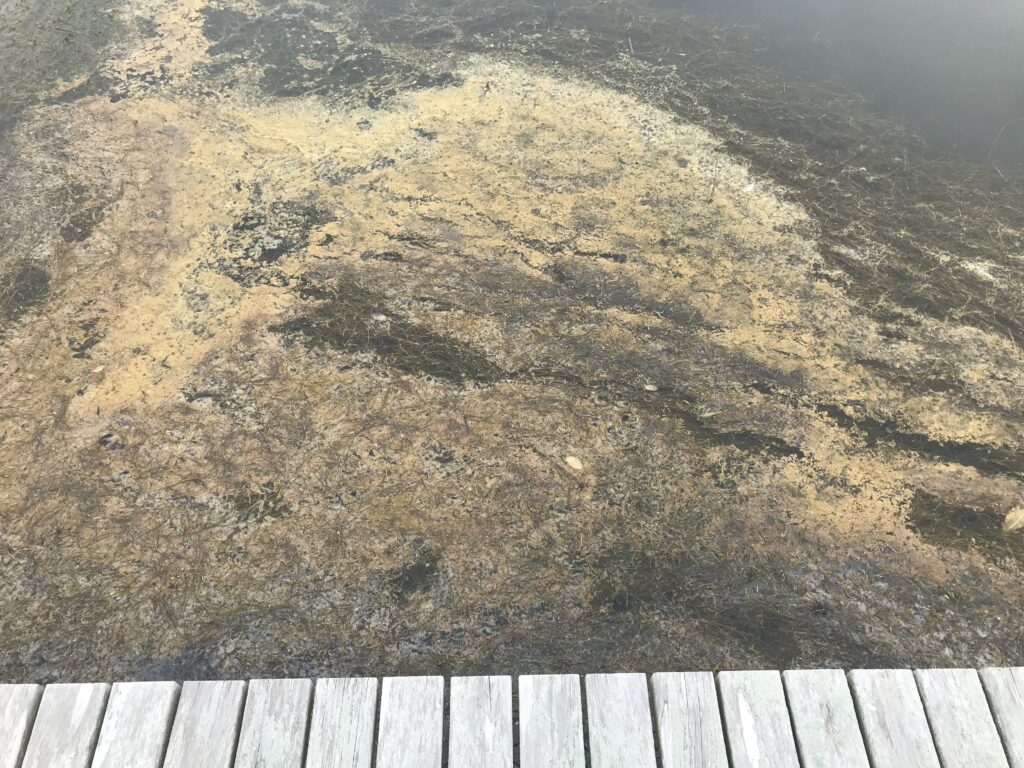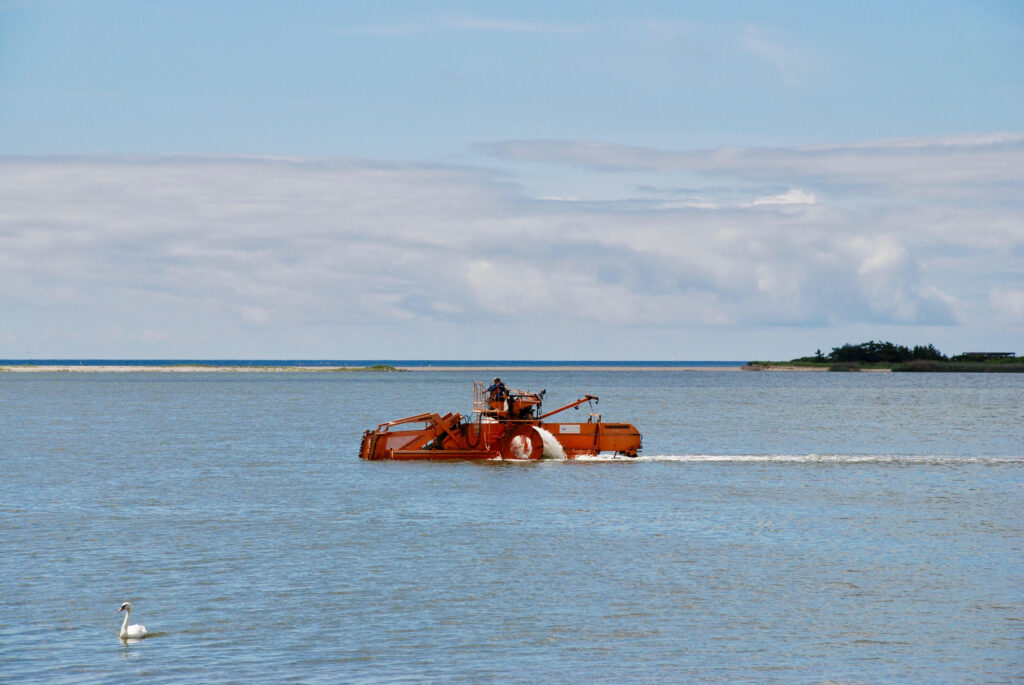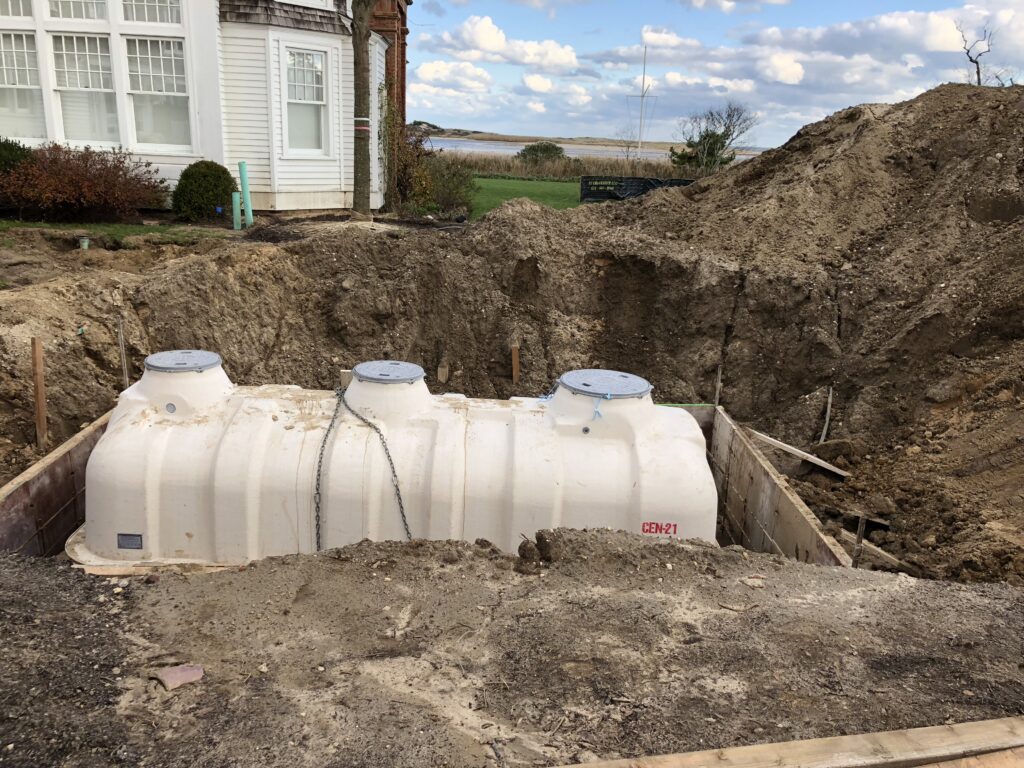In recent days the water quality of Georgica Pond has significantly deteriorated.
Why is this happening?
As summer progresses, the pond water warms and nutrients and bacteria continue to flow into the pond, making conditions ripe for explosive plant growth including green, brown and red algae and aquatic plants. The aquatic plants photosynthesize during the day producing oxygen but stop at night when respiration occurs which depletes the water of oxygen. In these low-oxygen conditions (hypoxia and even worse, anoxia) life is difficult to maintain. The soupy mix that results can create noxious odors, harm wildlife, inhibit recreational use of the pond and lead to toxic blue-green algae blooms later in the season.

On June 30th, following several nights of low oxygen and heavy rains resulting in high bacteria counts, a fish kill occurred at the north end of the pond. This is a troubling sig
What can be done?
There are several things that are in the works to help alleviate the problem.
Friends has applied for a permit to operate the aquatic weed harvester again. The permits are now under review with the New York State Department of Environmental Conservation and the Town of East Hampton. In the three years we operated the harvester, plant biomass was removed from the pond during the summer growing season. All the nitrogen and phosphorus in the plant biomass was also removed and the pond’s water quality improved. Any environmental impacts of the harvester such as fish by-catch are far outweighed by the improvement in water quality. Now we are waiting for the agencies to act on our permit. We have responded expeditiously to their questions and sent them an urgent note about the deteriorating conditions at the pond.

Open the pond. The Trustees are prevented from opening the pond at this time because of the nesting piping plovers which are a federally threatened bird which nests on the beach close to where the pond would be opened. Last year the pond stayed open much longer and didn’t close until July 25. As a result of extended tidal exchange, the water quality was much better last year.
Reduce the amount of nitrogen entering the pond by installing a low-nitrogen septic system. These new systems significantly reduce the amount of nitrogen in your wastewater which seeps down to the groundwater and into the pond. By improving your home with one of these systems, you will help prevent such blooms this year and in future years. Rebates are available to all homeowners who do this voluntarily and we encourage you to take advantage of this right away. To date, 14 systems have been installed and 19 are in the planning stage at the pond.

Reduce the amount of bacteria and other contaminants by implementing green engineering plans to reduce surface/storm water runoff for the Cove Hollow Pipe (the end of Cove Hollow Road) and the Rt. 27 Rest Stop. Both of these public access points for the pond showed dangerously high (well over the NY State threshold) levels of Enterococcus bacteria on June 29 after a heavy rainfall. Friends has taken the lead on the Rt. 27 Rest Stop and is working with the Town and Village to develop plans to intercept and disperse stormwater at the Cove Hollow Pipe.
While there is no silver bullet to solve the water quality problem at Georgica Pond, a number of important steps are underway and with your help real progress is being made.
This alert is intended to inform you of the changing conditions at the pond. Currently, there is no toxic blue-green algae bloom and the Suffolk County Department of Health and the New York State DEC have not issued a warning about fishing or any other recreational use of the pond.
